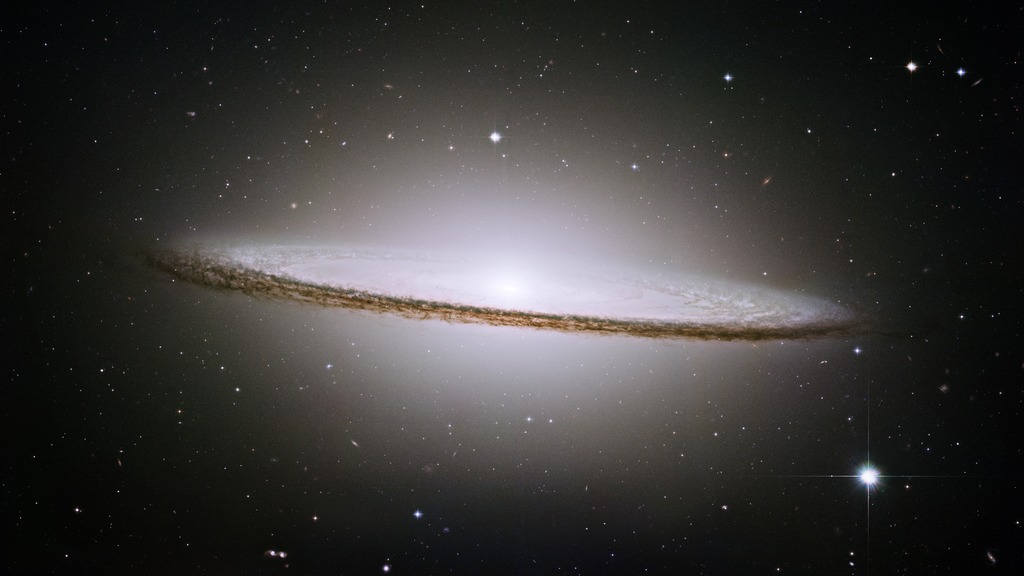Galaxies Galore! Hubble's Last 'Frontier Fields' Image Live Shots
Galaxies Galore! A lot of Galaxies Need Guarding in Hubble’s Latest View
New ‘Frontier Field’ Image Takes us on an Adventure to the Edges of the Universe
The Hubble Space Telescope is humanity’s window to the cosmos. Just in time for the release of Guardians of the Galaxy Vol. 2, Hubble’s newest and final ‘Frontier Field’ image shows just how vast and crowded our universe is. There are thousands of galaxies in the narrow field of sky Hubble looked at – an area no bigger than looking at the sky through a soda straw. Thanks to Hubble, scientists estimate there are some two trillion galaxies. Now that’s a lot of galaxies in need of guarding!
So what exactly is a galaxy and what kind of superpower did Hubble use to capture this new image? Chat with NASA on Friday, May 5, from 6:00 a.m. – 11:30 a.m. ET to show your viewers this new deep field image, and find out how Hubble uses nature’s own magnifying lens to see some of the faintest galaxies ever seen.
Hubble’s Frontier Fields program uses the gravitational power of massive galaxy clusters deep in space to magnify the light of galaxies too faint and distant for Hubble to see directly. The resulting image is like a funhouse mirror, showing galaxies that appear distorted and stretched. This gravitational lensing effect is the best tool for finding and studying one of nature’s biggest secrets, something called dark matter.
To book a window contact
Michelle Handleman/ michelle.z.handleman@nasa.gov/ 301-286-0918
HD Satellite Coordinates for G17-K18/LO: Galaxy 17 Ku-band Xp 18 Slot Lower| 91.0 ° W Longitude | DL 12051.0 MHz | Vertical Polarity | QPSK/DVB-S | FEC 3/4 | SR 13.235 Mbps | DR 18.2954 MHz | HD 720p | Format MPEG2 | Chroma Level 4:2:0 | Audio Embedded
Suggested Questions:
1. What is a galaxy and can you show us some that need guarding?
2. What superpower did Hubble use to see faint and distant galaxies in this new image?
3. Dark matter sounds like something a villain would use. How do missions like Hubble help us learn about one of nature’s biggest secrets?
4. Hubble just celebrated its 27th birthday. What’s next for the famous space telescope?
5. Where can we see this beautiful image and learn more about Hubble?
Live Shot Details:
Location: NASA’s Goddard Space Flight Center / Greenbelt, Maryland
Interviews with:
Jim Jeletic / Hubble Space Telescope Deputy Project Manager
Dr. Padi Boyd / NASA Scientist
Dr. Dan Coe / Astronomer / Space Telescope Science Institute
Dr. Susana Deustua / Associate Scientist / Space Telescope Science Institute [Spanish interviews]
Video: NASA will roll all insert videos during live interviews. If needed, stations can roll a clean feed of all video at 5:45 a.m. ET on May 5, 2017, at the above listed satellite.
Learn more:nasa.gov/hubble
Follow us:@NASAHubble
B-Roll
Canned Interview with Jim Jeletic - Hubble Deputy Project Manager
Canned interview with Dr. Dan Coe looking off camera. TRT 4:35. Includes full transcript.
Canned interview with NASA Scientist Dr. Padi Boyd. TRT 4:43. Includes full transcript of text. She answers the following questions:
1. What is a galaxy and can you show us some that need guarding?
2. What superpower did Hubble use to see the faint and distant galaxies in this new image?
3. Dark matter sounds like something a villain would use. How do missions like Hubble help us learn about one of nature’s biggest secrets?
4. Hubble just celebrated its 27th birthday. What’s next for the famous space telescope?
5. Where can we see this beautiful image and learn more about Hubble?
Facebook Live - The full live broadcast from Friday, May 5, 2017.
TRT: 33:24
Host: Erin Kisliuk, Hubble Outreach and Social Media
Scientists: Dr. Michelle Thaller, NASA HQ; Dr. Dan Coe, Space Telescope Science Institute
Producer: Joy Ng
For More Information
See the following sources:
Credits
Please give credit for this item to:
NASA's Goddard Space Flight Center
-
Producers
- Michelle Handleman (USRA)
- Claire Saravia (NASA/GSFC)
-
Editor
- Katrina Jackson (USRA)
Release date
This page was originally published on Monday, May 1, 2017.
This page was last updated on Monday, January 6, 2025 at 1:32 AM EST.

![Music credit: "Midtown Moonshine" by Brent Woods [ASCAP] and Enrico Cacace [BMI]; Atmosphere Music Ltd PRS; Volta Music; Killer Tracks Production MusicWatch this video on the NASA Goddard YouTube channel.](/vis/a010000/a012500/a012599/Hubble_Guardians_thumbnail.png)
